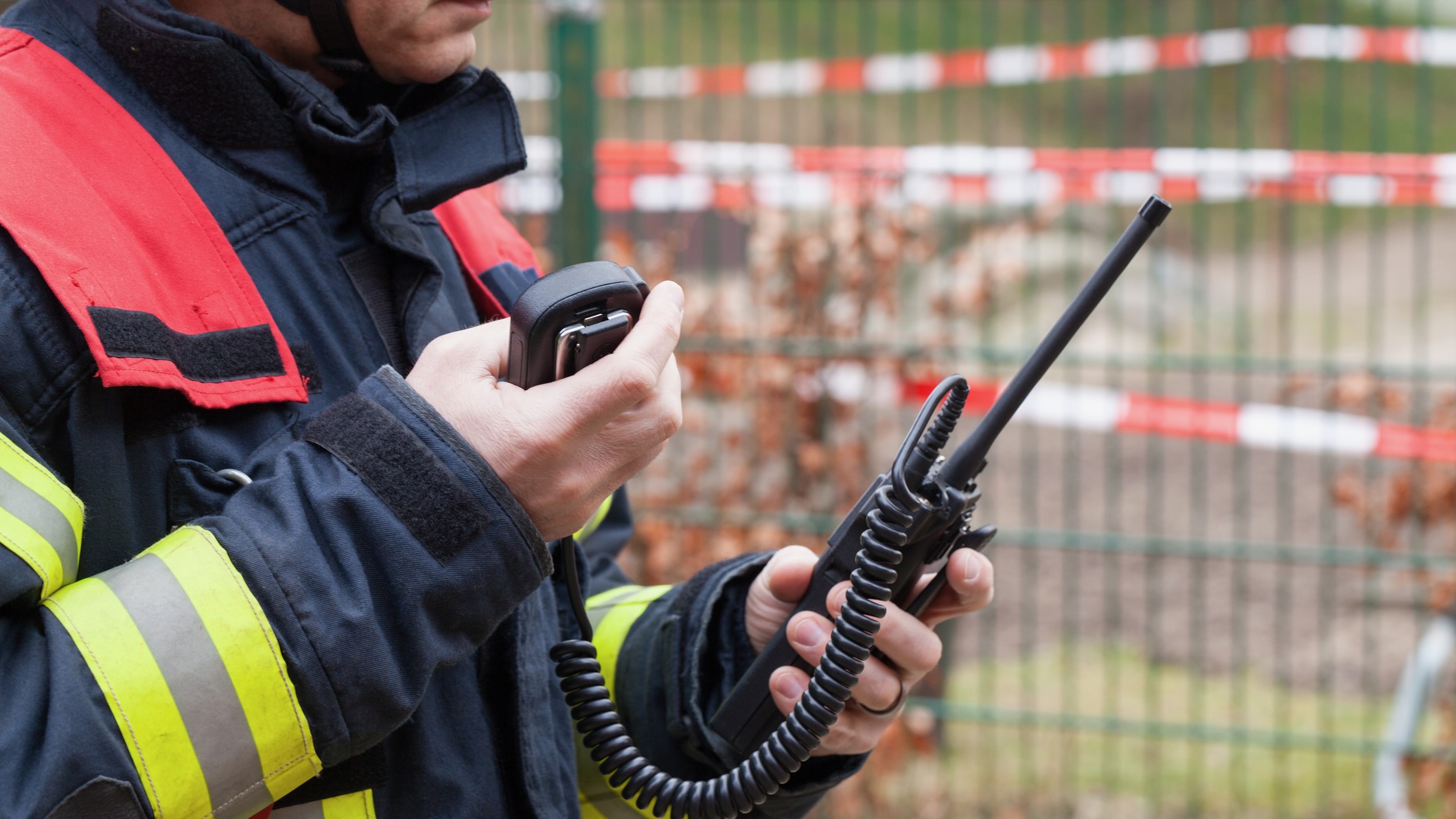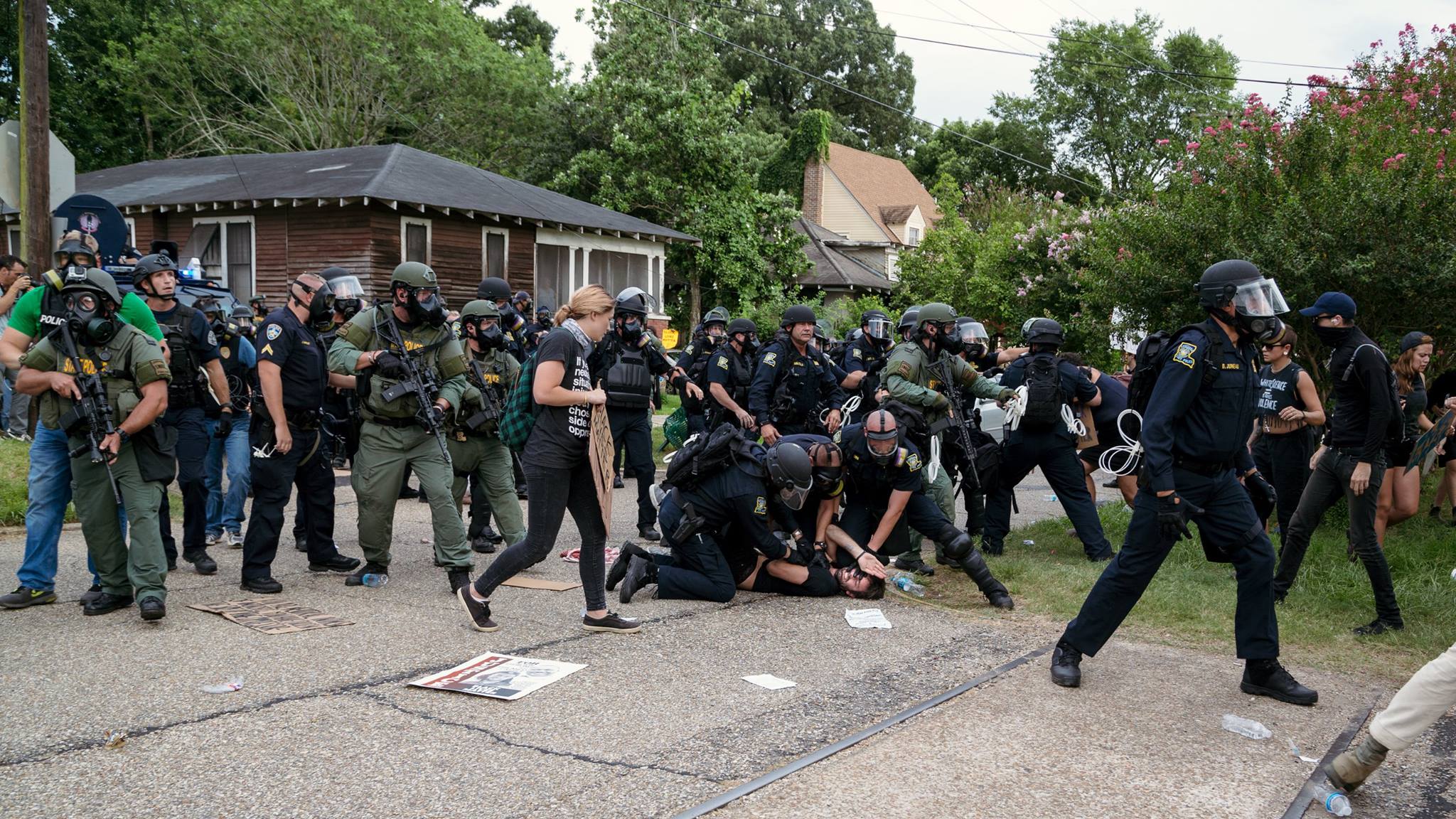What’s that up there?
Talk about collaboration!
A typical FM/TV tower can be home to dozens of antennas for stations and other spectrum users. Five full-power TV stations and five FM broadcast from Pinnacle Hill in Rochester, N.Y. (right). Some FM translators and two-way radio and mobile users also share the tower. Pubcaster WXXI owns the middle tower and uses it to broadcast its TV signal and two FMs.
1 These are UHF TV antennas, typically 40-50 feet in length. The two on the crossbar atop WXXI’s tower aired analog signals until the analog turnoff and now will be removed. WXXI-TV’s DTV antenna is on the opposite side of the tower.
2 These two VHF DTV antennas are used by commercial stations here.
3 These are FM antennas. WXXI-FM goes out from the white bays on the left side of the center tower, with a few bays devoted to the digital HD Radio signal interleaved with the analog bays. Multiple bays, or antenna elements, put out more signal without a higher-powered transmitter. Fiberglass “radomes” protect them from ice buildup. The smaller FM antennas on the short tower to the right stand out in the open, risking degraded performance that can come with extreme cold.
4 These antennas receive microwave signals from local ENG (electronic newsgathering) trucks around town, feeding remote broadcasts to stations.
5 Studio-transmitter link antennas receive microwave signals from stations’ studios. In return they relay live beauty-shots of skylines and traffic jams. Other antennas commonly seen on towers include small vertical “whip” antennas used for two-way radio services and paging, as well as the now-ubiquitous antennas of cellular and wireless providers.
 When multiple stations need to share a common tower location, they often turn to a “candelabra” like this one (right) shared by pubcaster WCNY in Syracuse, N.Y., and a local commercial station, WSTM-TV. This tower was built in 2003 with expansion in mind: a counterweight keeps the candelabra balanced until a renter comes along to mount a third set of antennas.
When multiple stations need to share a common tower location, they often turn to a “candelabra” like this one (right) shared by pubcaster WCNY in Syracuse, N.Y., and a local commercial station, WSTM-TV. This tower was built in 2003 with expansion in mind: a counterweight keeps the candelabra balanced until a renter comes along to mount a third set of antennas.
FM and TV signals are ‘line-of-sight’
They do best by traveling straight to your radio or TV receiver. To overcome intervening hills and reach as far as permissible, stations typically broadcast FM and TV from the highest ground available. Nevada Public Radio’s KNPR-FM and KCNV-FM and many other FMs broadcast from Mount Potosi (below), 8,500 feet above sea level and 25 miles southwest of Las Vegas. KNPR can often be heard more than 80 miles away.
 Where mountains are scarce, as in the Midwest and the Southeast, stations band together to build very tall towers. At left, a 1,926-foot tower near Cedar Rapids, Iowa — among the tallest used by pubcasters — serves Iowa Public TV (KRIN) and Iowa Public Radio (KUNI-FM), as well as several commercial stations.
Where mountains are scarce, as in the Midwest and the Southeast, stations band together to build very tall towers. At left, a 1,926-foot tower near Cedar Rapids, Iowa — among the tallest used by pubcasters — serves Iowa Public TV (KRIN) and Iowa Public Radio (KUNI-FM), as well as several commercial stations.
Towers higher than 1,000 feet tend to be assembled from identical segments, triangular in cross-section, and rely on guy wires to hold them upright. Self-supporting towers of that height would be too expensive to build.
Self-supporting towers tend to be shorter and located in areas where additional acreage for the guy-wire anchors would cost too much, or in terrain where guy wires would be impractical. Boston’s WGBH-FM (right) broadcasts from a typically tapered self-supporting structure atop the station’s namesake Great Blue Hill south of Boston.
AM: still used by several dozen pubcasters
AM radio uses the low frequencies where radio began, which have much longer wavelengths. While FM antennas are relatively small and mounted high on towers, AM’s longer wavelengths use the entire tower as an antenna, along with a network of underground wires that typically surround the tower in a circle as wide as the tower is high.
Experts in the black art of AM facility design recommend that AM towers’ height be a precise fraction, such as one-quarter, of the station’s wavelength so that the tower will resonate with the frequency. Stations with lower frequencies tend to have higher towers.
Old-timer KOAC in Corvallis, Ore. (below) uses two towers to transmit one signal. Other AM stations use several towers spaced in formation over many acres. KOAC luckily has extensive space on an experimental farm at Oregon State University.
Most AM stations are required to use directional antennas
— because AM signals, especially at night, can bounce thousands of miles off the ionosphere. Directional antennas mini-mize interference with other stations using the same frequency in other regions.
If a directional signal is required, multiple towers are laid out in patterns, as in the case of the venerable WOSU in Columbus, Ohio. While its AM signal covers much of the state during the day from a non-directional tower on the Ohio State University golf course, it must avoid nighttime interference with a Fort Worth, Texas, station that also uses 820 kHz. For the nighttime, WOSU added a separate six-tower site south of Columbus (above right) in the 1980s, and it reduces power to 790 watts at night. Its signal also must be tightly restricted to the city of Columbus and northward, missing much of the western suburbs. It’s little wonder that WOSU recently bought a second FM signal to extend the reach of its news programming on the AM channel (Current, Aug. 9, 2010).
Fybush also edits the industry newsletters NorthEast Radio Watch and The Radio Journal, and he consults with broadcasters on signal expansion and strategic acquisitions.










